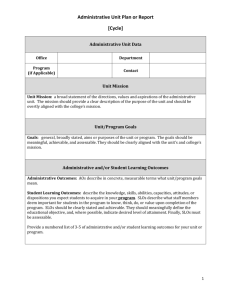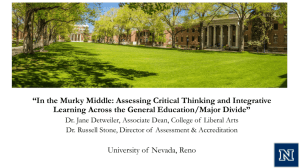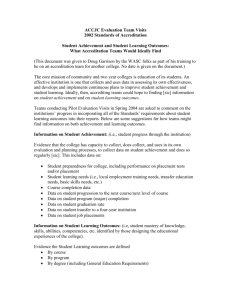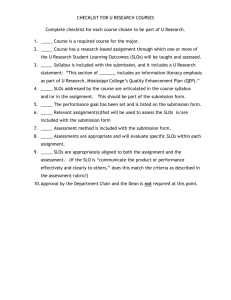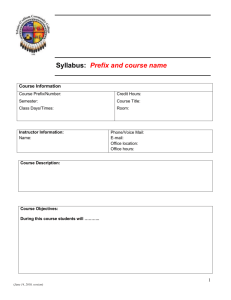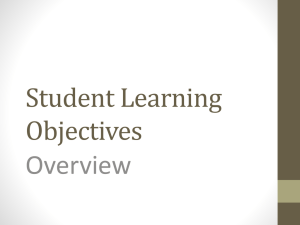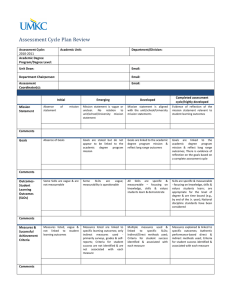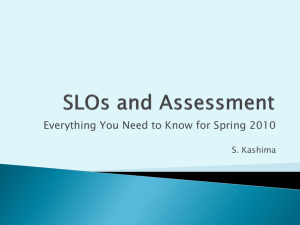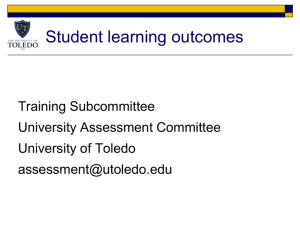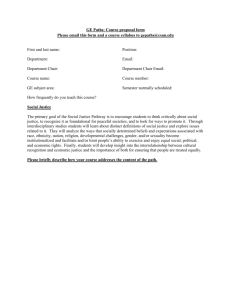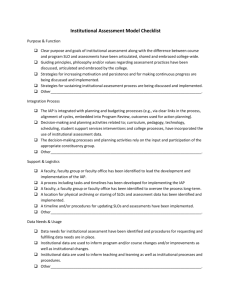(Adapted from the Cabrillo College “Student Learning Outcomes
advertisement
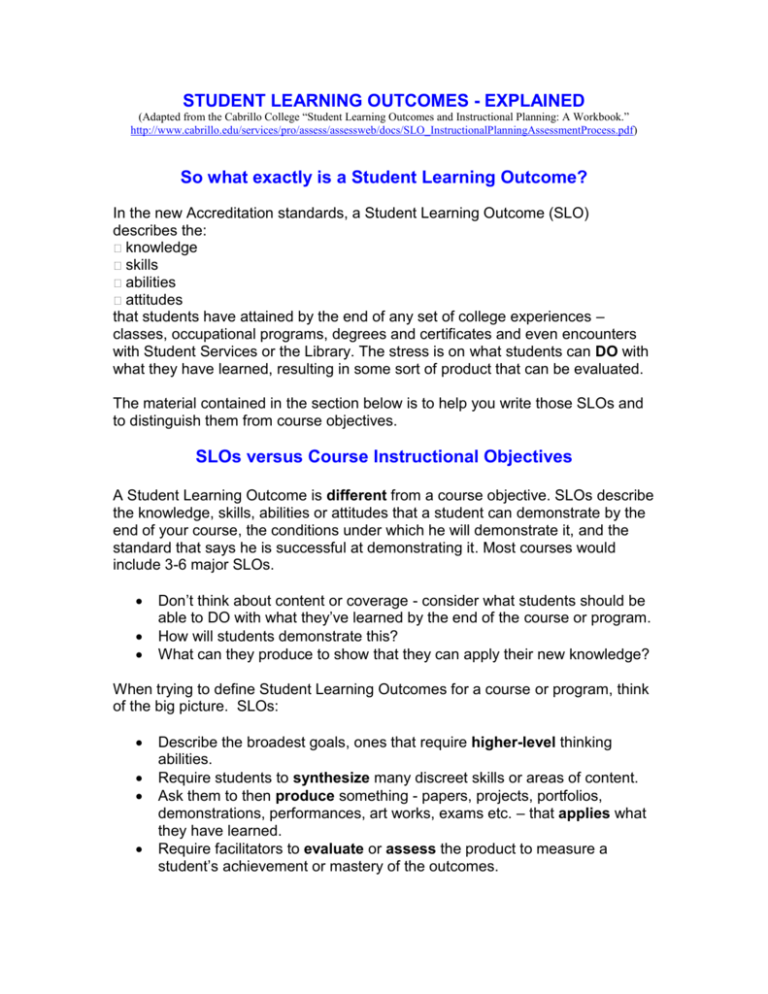
STUDENT LEARNING OUTCOMES - EXPLAINED (Adapted from the Cabrillo College “Student Learning Outcomes and Instructional Planning: A Workbook.” http://www.cabrillo.edu/services/pro/assess/assessweb/docs/SLO_InstructionalPlanningAssessmentProcess.pdf) So what exactly is a Student Learning Outcome? In the new Accreditation standards, a Student Learning Outcome (SLO) describes the: � knowledge � skills � abilities � attitudes that students have attained by the end of any set of college experiences – classes, occupational programs, degrees and certificates and even encounters with Student Services or the Library. The stress is on what students can DO with what they have learned, resulting in some sort of product that can be evaluated. The material contained in the section below is to help you write those SLOs and to distinguish them from course objectives. SLOs versus Course Instructional Objectives A Student Learning Outcome is different from a course objective. SLOs describe the knowledge, skills, abilities or attitudes that a student can demonstrate by the end of your course, the conditions under which he will demonstrate it, and the standard that says he is successful at demonstrating it. Most courses would include 3-6 major SLOs. Don’t think about content or coverage - consider what students should be able to DO with what they’ve learned by the end of the course or program. How will students demonstrate this? What can they produce to show that they can apply their new knowledge? When trying to define Student Learning Outcomes for a course or program, think of the big picture. SLOs: Describe the broadest goals, ones that require higher-level thinking abilities. Require students to synthesize many discreet skills or areas of content. Ask them to then produce something - papers, projects, portfolios, demonstrations, performances, art works, exams etc. – that applies what they have learned. Require facilitators to evaluate or assess the product to measure a student’s achievement or mastery of the outcomes. Course objectives are on a smaller scale. They are the “nuts and bolts.” They are subsets of outcomes. Think of objectives as the building blocks leading up to mastery of the outcomes. Objectives can be practiced and assessed individually, but are usually only a portion of an overall project or application. Objectives Outcomes Objectives describe skills, tools or content that a student will master by the end of course. Outcomes describe over-arching goals that a student will be able to demonstrate by the end of a course. Objectives require the use of basic thinking skills such as knowledge, comprehension and application. Outcomes require the use of higher level thinking skills such as analysis, synthesis and evaluation. Objectives do not necessarily result in a product. Most often, objectives are synthesized or combined to produce something that measures an outcome. Outcomes result in a product that can be measured and assessed. Guide to Writing SLOs Beginning is often the most difficult step. Remember that you have been doing this all along. Now is your chance to put what you know intuitively as a professional into words. 1) Describe one major piece of knowledge, skill, ability or attitude that a student will have gained by the end of your course or program. Describe what students will do -- not content, activities or hours. 2) Use action verbs. 3) Write it in language that a student will understand. 4) Make sure that the outcome is something that can be assessed or tested. 5) Hint: Sometimes it’s easier to start backwards by thinking about the major assessments you use in the course or program. These would be the products or demonstrations of your outcomes. Make a list of your major assignments for this course or program. Then try to describe in one sentence what the students are being asked to demonstrate in those assignment. 6) A word of warning: Be careful when describing attitudes in a learning outcome. They are hard to assess. Ask yourself if the attitude is crucial to success. If a student doesn’t have a certain attitude, but possesses the knowledge and skills being taught, is that satisfactory? 7) For most circumstances, you should have 3-6 SLOs. Remember, they are the major skills a student will be able to demonstrate. Save the smaller ones for course/program objectives. Sample Student Learning Outcomes Air Conditioning 57 In an applied setting, given instructions and/or demonstrations the student will be able to 1. Identify various air conditioning system configurations 2. Recommend an appropriate control strategy given a typical system configuration 3. Create a basic control sequence appropriate for a given system configuration to industry standards as determined by the instructor. Automotive Technology 101 While working in an automotive lab, students will – with 100% accuracy – diagnose and perform regularly scheduled maintenance including changing engine oil, changing transmission fluid, adding other fluids, checking tire pressure, measuring tire tread life, and changing spark plugs. Counseling After reviewing time management techniques, students will identify at least one technique to help them balance school, work, and family and will describe how to apply the technique(s) to their own unique situations. Financial Aid Given a financial aid packet, students will read and follow directions to accurately and independently complete a financial aid form.
